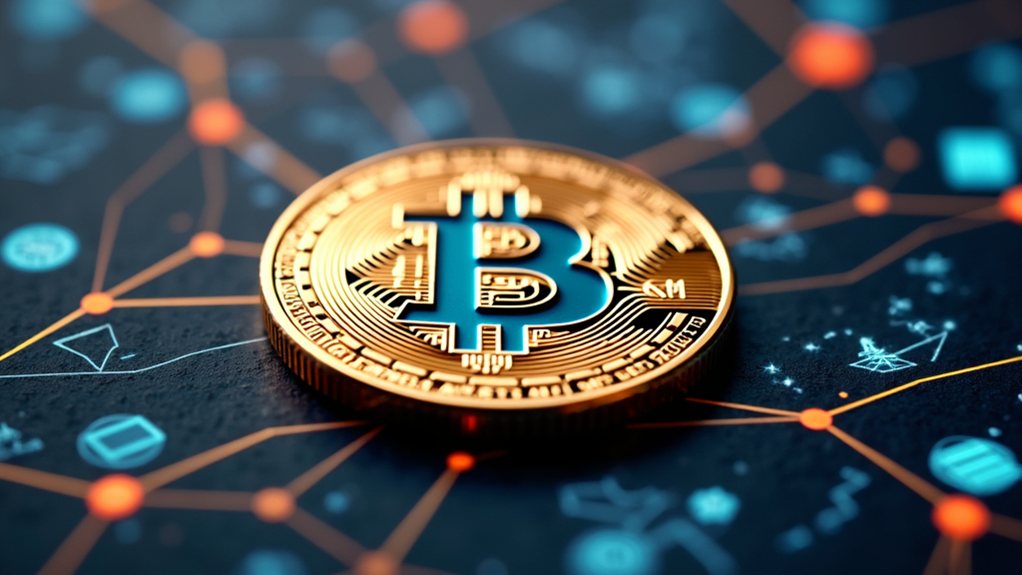Shiba Inu Coin is a cryptocurrency created in 2020 as an alternative to Dogecoin. It's an ERC-20 token built on Ethereum with a Shiba Inu dog as its mascot. The coin features a large supply of tokens and has developed an ecosystem including ShibaSwap exchange and additional tokens like LEASH and BONE. Despite its high volatility, SHIB has gained popularity through its passionate community known as the "SHIB Army." The coin's journey reveals much about meme-based cryptocurrency dynamics.

Meteoric rise best describes Shiba Inu Coin's journey in the cryptocurrency world. Launched in August 2020 by an anonymous creator known as "Ryoshi," this digital token quickly captured attention in the crypto space. It was created as a direct competitor to Dogecoin, even marketing itself as the "Dogecoin killer." SHIB, as it's commonly known, is an ERC-20 token built on the Ethereum blockchain, starting as an experiment in decentralized community building.
The token launched with a massive supply of 1 quadrillion SHIB tokens. Half of these tokens were locked in Uniswap for liquidity, while the other half were sent to Ethereum co-founder Significant Buterin. In a surprising move, Buterin burned 90% of his holdings and donated the remaining 10% to charity. As of 2024, there are approximately 589 trillion SHIB tokens in circulation. This token features a Shiba Inu dog as its recognizable mascot that has helped drive its popularity in the meme coin market.
With a staggering initial supply of 1 quadrillion tokens, SHIB's circulation dramatically decreased after Buterin's unexpected burn.
SHIB isn't alone in its ecosystem. It's accompanied by two other tokens: LEASH, which has a limited supply and serves as a rewards token, and BONE, which functions as a governance token giving holders voting rights. The ecosystem also features ShibaSwap, a decentralized exchange where users can trade, stake, and provide liquidity. Additionally, the project includes Shiboshis, a collection of 10,000 unique Shiba Inu NFTs on the Ethereum blockchain.
The market performance of SHIB has been characterized by extreme volatility. It reached an all-time high of $0.000089 in October 2021. As of February 2024, SHIB holds a market capitalization of $7.84 billion with a daily trading volume of $296.69 million, ranking as the 16th largest cryptocurrency by market cap. The project employs a token burning mechanism that continuously reduces circulating supply to potentially increase value over time.
The "SHIB Army," as the coin's community is known, is large and incredibly active. Their efforts have led to SHIB being accepted as payment at hundreds of locations worldwide. The HODL philosophy is strongly embraced by community members who believe in holding their tokens for long-term gains rather than short-term trading. The token is available on all major cryptocurrency exchanges and maintains a strong social media presence. Most development and marketing initiatives are community-driven.
Technologically, SHIB benefits from Ethereum's smart contract functionality. Users can stake tokens and provide liquidity on ShibaSwap. The development team is working on Shibarium, a layer-2 solution aimed at improving transaction speeds and reducing fees. There are also plans to integrate SHIB into the metaverse and gaming applications.
Despite its popularity, SHIB faces criticism. It's highly volatile and speculative, with limited practical use cases compared to many cryptocurrencies. Regulatory uncertainties surrounding meme tokens pose additional risks. The token's value heavily depends on community enthusiasm and social media trends. There's also concern about market manipulation due to concentrated token holdings among a small number of wallets.
Frequently Asked Questions
How Does Shiba Inu Compare to Dogecoin?
Shiba Inu differs from Dogecoin in several key areas.
While Dogecoin has a larger market cap ($14.49B vs. $7.87B), Shiba Inu offers more technical capabilities as an Ethereum-based token.
DOGE has its own blockchain with unlimited supply, while SHIB has a fixed supply with burn mechanisms.
SHIB focuses on DeFi and NFTs, whereas DOGE is primarily used for payments.
SHIB processes transactions faster but isn't accepted by as many merchants.
What Wallets Support Storing Shiba Inu Coin?
Shiba Inu coin can be stored in various wallet types.
Hardware wallets include Ledger Nano S/X, Trezor models, SafePal S1, KeepKey, and Ellipal Titan.
Popular software options are MetaMask, Trust Wallet, Coinbase Wallet, Exodus, and Atomic Wallet.
Exchanges like Binance, Crypto.com, KuCoin, Huobi, and Gate.io offer custodial storage.
Specialized wallets such as ShibaSwap, BitPay, Guarda, Coin98, and MathWallet provide additional SHIB-specific features.
Does Shiba Inu Have Real-World Utility?
Shiba Inu does have real-world utility. It's accepted by over 600 merchants globally, including AMC Theatres, Newegg, and Travala. Users can make purchases ranging from movie tickets to electronics and hotel bookings.
The ecosystem includes ShibaSwap for token swapping and the Shibarium blockchain for faster transactions.
SHIB has also contributed to charitable causes, including a $1 billion donation to India's COVID-19 relief fund in 2021.
Can Shiba Inu Reach $0.01 or $1?
Reaching $0.01 or $1 appears mathematically improbable for Shiba Inu.
At $0.01, its market cap would hit $5.89 trillion, exceeding the entire crypto market's $3 trillion value. A $1 price would create a $589.3 trillion market cap, surpassing global wealth.
Current burn rates would take thousands of years to reduce supply sufficiently.
While some analysts project $0.0001 by 2025, most experts remain skeptical about such dramatic price increases.
Who Created Shiba Inu and Why?
Shiba Inu cryptocurrency was created in August 2020 by an anonymous person known only as "Ryoshi."
They designed it as an experiment in decentralized community building on the Ethereum blockchain.
Ryoshi positioned the token as a "Dogecoin killer" and disappeared from social media in May 2022, deleting all posts.
They believed the project should continue without them, emphasizing that the community was more important than its founder.










